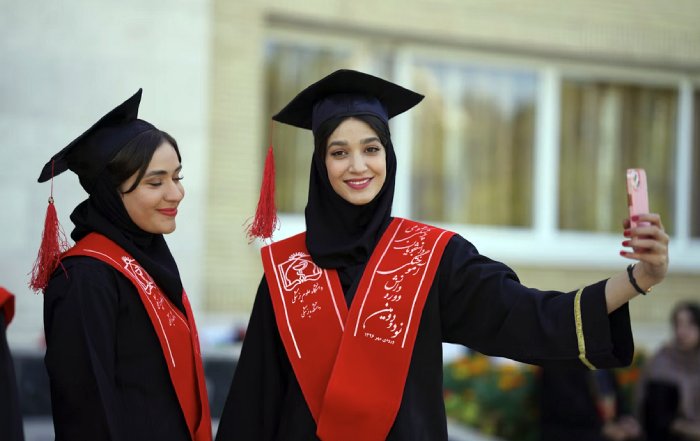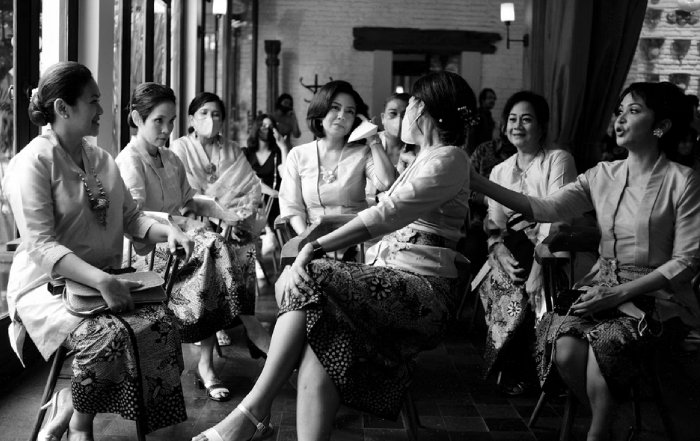How Education Empowers Women Around the World in 2025
Education as the Foundation of Women's Power
In 2025, the connection between women's education and global progress is no longer a matter of debate but an established pillar of economic, social, and cultural development, and for a platform like HerStage, which is dedicated to amplifying women's voices and journeys, the question is no longer whether education empowers women, but how deeply and in how many dimensions this empowerment reshapes lives, communities, and entire economies. Across continents, from the United States and the United Kingdom to India, Nigeria, Brazil, and beyond, data from organizations such as UNESCO and the World Bank consistently shows that when girls and women have access to quality education, they marry later, earn higher incomes, participate more fully in civic life, and raise healthier, better-educated children, creating a compounding effect that benefits societies for generations. As readers who care about women's evolving roles in society already understand, education is not just a pathway to a better job; it is a profound redefinition of what is possible in a woman's life, influencing her lifestyle, her leadership potential, her health, and her sense of agency in a rapidly changing world.
At the same time, educational access and outcomes remain deeply uneven, with geographic, cultural, economic, and digital divides shaping whether a girl in rural Sub-Saharan Africa, an urban center in Asia, or a small town in Europe can fully realize her potential, and this unevenness is particularly visible when examining the intersection of gender with poverty, conflict, disability, and migration. Reports from UNICEF and the World Economic Forum show that while global gender gaps in primary education have narrowed, significant disparities persist at secondary and tertiary levels, especially in regions affected by conflict or entrenched gender norms. For HerStage readers in North America, Europe, Asia, Africa, and South America, understanding these dynamics is essential, not as distant statistics but as part of a shared global narrative in which women's education, leadership, and wellbeing are deeply interconnected. As the world navigates post-pandemic recovery, digital transformation, and the climate crisis, the role of educated women has become central to business resilience, political stability, and social innovation, making this topic both timely and deeply personal for the HerStage community.
The Global Landscape: Progress, Gaps, and Regional Nuances
Globally, the last two decades have seen striking progress in girls' enrollment in primary and lower secondary education, and according to analyses from UNESCO's Institute for Statistics, many regions have reached or are close to gender parity at these levels, yet parity in enrollment does not automatically translate into parity in completion, quality of learning, or pathways into higher education and skilled employment. In countries such as Germany, Canada, and Australia, girls not only complete secondary school at high rates but also increasingly outnumber men in many university programs, particularly in fields such as health, education, and the humanities, while in parts of South Asia, the Middle East, and Sub-Saharan Africa, millions of girls still leave school early due to child marriage, unpaid care responsibilities, or a lack of safe, affordable schooling. Analysts at the World Bank have highlighted that each additional year of schooling for girls can increase their future earnings by up to 20 percent, yet this potential is unrealized where structural barriers remain entrenched.
Regional differences underscore why a one-size-fits-all narrative fails to capture the complexity of women's educational experiences, and for a global readership spanning Europe, Asia, Africa, and the Americas, it is important to recognize how local context shapes opportunity. In the Nordic countries, including Sweden, Norway, Denmark, and Finland, strong social welfare systems, robust childcare support, and inclusive educational policies have produced some of the world's highest levels of women's educational attainment and labor-force participation, contributing to their high rankings in gender equality indexes published by the World Economic Forum. By contrast, in regions of West and Central Africa, research from UNICEF shows that conflict, displacement, and poverty combine to keep millions of girls out of school, while in South and Southeast Asia, including countries such as India, Pakistan, and Thailand, rapid progress in urban centers coexists with persistent rural disparities. For readers in the United States and the United Kingdom, the picture is more nuanced: women are highly educated overall, yet racial, ethnic, and socioeconomic gaps remain substantial, and women continue to be underrepresented in certain high-paying STEM fields, a reality documented by agencies such as UN Women and the OECD.
Education and Economic Empowerment: From Classroom to Career
The most visible and widely discussed effect of women's education is economic empowerment, which begins with the ability to access better-paying jobs and extends to entrepreneurship, leadership, and long-term financial security. As studies from the International Labour Organization show, women with secondary and tertiary education are significantly more likely to participate in the formal labor market, and they tend to secure positions that offer higher wages, social protections, and opportunities for advancement. For the HerStage audience interested in career development and advancement, education acts as a critical lever, shaping not only the first job but also the trajectory of promotions, leadership roles, and cross-border mobility. In countries such as the United States, Canada, and the Netherlands, women with university degrees are increasingly visible in professional services, technology, finance, and healthcare leadership, and while wage gaps persist, the earnings premium associated with higher education remains substantial.
Beyond formal employment, education also fuels women's entrepreneurship, particularly in emerging markets where formal jobs may be scarce but digital tools and microfinance are opening new avenues for business creation. Organizations like Goldman Sachs' 10,000 Women initiative and Grameen Bank have demonstrated that when women receive business training and access to capital, they are more likely to start and sustain successful enterprises, generating jobs and reinvesting earnings in their families and communities. In Brazil, South Africa, and Malaysia, educated women entrepreneurs are increasingly active in technology, e-commerce, sustainable agriculture, and creative industries, leveraging digital platforms to reach global customers and diversify income sources. For business-focused readers exploring women's role in the global economy, the message is clear: investing in girls' and women's education is not just a social good but a powerful economic strategy that boosts productivity, innovation, and GDP growth across regions.
Leadership, Influence, and Representation in a Changing World
The link between education and leadership is particularly evident in politics, corporate governance, and civil society, where educated women are reshaping decision-making processes and institutional cultures. Research by UN Women and the Inter-Parliamentary Union shows that countries with higher levels of girls' education tend to have higher representation of women in parliaments and ministerial positions, and while correlation does not equal causation, the pattern underscores how education expands the pipeline of women qualified and confident enough to run for office and influence policy. In Europe, countries such as France, Spain, and Italy have implemented gender quotas and parity laws that, when combined with high levels of women's education, have led to a significant increase in women's political representation and influence on legislation related to family policy, labor rights, and gender-based violence. Similarly, in New Zealand and several Nordic countries, highly educated women leaders have become prominent figures in global debates on climate policy, digital governance, and social inclusion.
In the corporate world, education is a key factor in women's ascension to executive roles and board positions, with research from McKinsey & Company and Catalyst showing that companies with higher gender diversity in leadership often outperform peers on profitability and innovation metrics. From multinational corporations headquartered in the United States and United Kingdom to fast-growing firms in Singapore, South Korea, and Japan, highly educated women are taking on roles as CEOs, CFOs, chief sustainability officers, and founders, influencing everything from corporate strategy to workplace culture. For HerStage readers seeking to strengthen their leadership capabilities, the pattern is instructive: formal education, continuous learning, and executive training programs together create a foundation for authority, credibility, and resilience in high-stakes environments. At the same time, leadership development now extends beyond traditional degrees to include online courses, mentorship networks, and cross-cultural experiences that help women navigate complex, globalized markets.
Health, Wellbeing, and Lifestyle Transformation
The influence of education on women's health and overall lifestyle is both profound and multifaceted, touching physical health, mental wellbeing, reproductive choices, and daily habits. Studies by the World Health Organization consistently show that educated women are more likely to access healthcare services, understand medical information, and adopt preventive health behaviors, leading to lower maternal mortality, reduced rates of certain infectious diseases, and better management of chronic conditions. In regions such as Sub-Saharan Africa and South Asia, even modest increases in girls' education have been associated with significant declines in child mortality and improvements in nutrition, as mothers with more schooling are better informed about vaccination schedules, sanitation, and balanced diets. For readers interested in health and wellbeing, education thus emerges as a powerful determinant of quality of life, influencing not only personal health choices but also the wellbeing of families and communities.
Mental health and lifestyle are also deeply connected to educational experiences, as women who have access to learning environments that foster critical thinking, self-expression, and social support often develop stronger coping skills and a greater sense of purpose. Universities and training programs in countries such as Australia, Switzerland, and the Netherlands increasingly integrate wellbeing initiatives, mindfulness practices, and counseling services, recognizing that academic success and mental health are intertwined. Resources from organizations like Mental Health America and the National Health Service in the UK highlight how education can provide women with language and tools to recognize stress, anxiety, and burnout, and to seek help without stigma. For the HerStage community, which explores lifestyle, self-improvement, and mindfulness, education is not limited to formal degrees but includes lifelong learning experiences that encourage healthier relationships with work, body image, and personal identity, shaping how women design their daily routines, manage digital overload, and cultivate balance.
Self-Improvement, Confidence, and Personal Agency
Education also transforms the internal landscape of women's lives, influencing confidence, self-efficacy, and the sense of agency that underpins personal and professional growth. Psychological research, including work highlighted by the American Psychological Association, indicates that educational achievement is correlated with higher self-esteem and a stronger belief in one's ability to influence outcomes, especially when learning environments are inclusive and supportive rather than discriminatory or hostile. For women who have historically been told that leadership, technical expertise, or financial decision-making are not "for them," the experience of mastering complex subjects, engaging in debate, and receiving recognition for intellectual contributions can be profoundly liberating. This transformation often extends beyond the classroom, shaping how women negotiate salaries, set boundaries in relationships, or decide to relocate for a better opportunity.
In many parts of the world, including the United States, the United Kingdom, and major cities in Asia and Africa, the rise of online learning platforms and professional development courses has democratized access to self-improvement, allowing women to upskill or reskill while balancing work and caregiving responsibilities. Programs offered by institutions like Coursera, edX, and LinkedIn Learning have made it possible for women in remote or underserved regions to study subjects ranging from data science to entrepreneurship, often at low or no cost. For readers drawn to self-improvement journeys, this new educational landscape offers unprecedented flexibility, enabling women to design personalized learning paths aligned with their ambitions, whether that means preparing for a promotion, launching a side business, or transitioning into a new field. As women accumulate knowledge and skills, they often become more willing to challenge limiting beliefs, advocate for themselves, and mentor others, creating a virtuous cycle of empowerment.
Culture, Identity, and the Power to Redefine Norms
Education also plays a critical role in shaping cultural narratives about gender, identity, beauty, and success, offering women tools to question stereotypes and participate in the creation of new norms. Through literature, history, media studies, and social sciences, women encounter alternative models of femininity and leadership that go beyond traditional expectations, enabling them to see themselves not just as caregivers or supporters but as innovators, creators, and decision-makers. Academic and cultural institutions, including universities, museums, and media organizations, have increasingly highlighted women's contributions to art, science, politics, and business, as illustrated by initiatives from institutions like the Smithsonian and the British Museum, which showcase women's stories and achievements across centuries and cultures. For readers engaged with beauty, fashion, and lifestyle, education offers a framework for understanding how cultural standards around appearance, glamour, and success are constructed, and how they can be reshaped to be more inclusive and empowering.
This cultural dimension is especially relevant in regions where traditional gender norms remain strong, but where younger generations, equipped with education and digital connectivity, are negotiating new identities. In countries like South Korea and Japan, for example, highly educated young women are challenging expectations around marriage, motherhood, and career, while in parts of the Middle East and North Africa, women university graduates are quietly but steadily expanding their presence in professions historically dominated by men. Global media, including platforms like BBC, The Guardian, and international editions of major fashion and lifestyle magazines, increasingly feature narratives of women who use education to break barriers in fields ranging from technology and finance to culinary arts and sustainable fashion. For HerStage, which speaks to women navigating their own definitions of success and style, education is part of a broader toolkit that allows them to align external expressions of beauty and lifestyle with internal values, ambitions, and ethical commitments.
Digital Education, Innovation, and the Future of Work
By 2025, the digital transformation of education has become one of the most significant forces reshaping how women learn, work, and lead, and this shift carries both promise and risk. On the one hand, access to high-speed internet, smartphones, and online learning platforms has opened unprecedented opportunities for women in remote or underserved areas to pursue formal degrees, vocational training, and specialized certifications without relocating or leaving their families. Organizations such as UNICEF and UNESCO have championed digital learning initiatives that bring educational content to girls in refugee camps, rural villages, and conflict zones, while major technology companies have launched scholarship programs and coding bootcamps aimed specifically at women and girls. Learn more about how digital learning is transforming access to education through resources provided by UNESCO and similar institutions that track global trends in online education.
On the other hand, the digital divide remains a serious barrier, particularly in parts of Africa, South Asia, and Latin America where access to reliable electricity, affordable data, and safe online environments cannot be taken for granted. Cyberbullying, online harassment, and misinformation disproportionately affect women and girls, potentially undermining the benefits of digital education unless robust protections and digital literacy programs are in place. For women preparing for the future of work, which will increasingly demand hybrid skill sets combining technical expertise, creativity, and emotional intelligence, staying ahead of technological change is essential. Platforms offering practical guides and resources can help women navigate choices about which skills to invest in, how to evaluate online credentials, and how to integrate continuous learning into already demanding schedules. As automation and artificial intelligence reshape industries from manufacturing to finance and healthcare, women who have access to adaptive, forward-looking education will be better positioned to lead in emerging fields such as green technology, ethical AI, and sustainable business.
Intersectionality, Inclusion, and the Work Still to Be Done
While celebrating the transformative power of education, it is essential to acknowledge that not all women benefit equally, and that race, class, disability, migration status, and other factors significantly shape educational opportunities and outcomes. In the United States, Canada, and the United Kingdom, for example, women from marginalized racial and ethnic communities still face systemic barriers including underfunded schools, biased expectations, and limited access to mentorship and networks, challenges that organizations like the NAACP and Runnymede Trust have documented extensively. In Europe, refugee and migrant women often struggle to have their prior qualifications recognized, forcing them into low-paid, precarious work regardless of their educational background. In parts of Asia, Africa, and Latin America, girls with disabilities are among the least likely to attend school, despite international commitments under the UN Convention on the Rights of Persons with Disabilities.
Addressing these disparities requires more than expanding access; it demands intentional, intersectional policies that recognize how different forms of discrimination intersect and compound. Governments, NGOs, and private-sector actors are experimenting with targeted scholarships, community-based programs, and inclusive curricula designed to reach those most at risk of being left behind, and the World Bank, UNESCO, and UN Women continue to publish guidance on best practices in inclusive education. For HerStage readers committed to global awareness and world affairs, understanding these complexities is part of being an informed advocate, ally, and leader. It also underscores the importance of amplifying diverse voices and stories, ensuring that conversations about women's education do not focus solely on those who have already crossed the finish line, but also on those still fighting for the chance to begin.
HerStage, Women's Education, and the Road Ahead
For HerStage, the story of how education empowers women around the world is not an abstract policy debate but a living, evolving narrative that touches every theme the platform explores, from women's lived experiences and lifestyle choices to career growth, business leadership, and personal wellbeing. As women in the United States, the United Kingdom, Germany, Canada, Australia, France, Italy, Spain, the Netherlands, Switzerland, China, Sweden, Norway, Singapore, Denmark, South Korea, Japan, Thailand, Finland, South Africa, Brazil, Malaysia, New Zealand, and beyond navigate a world marked by rapid technological change, geopolitical uncertainty, and cultural shifts, education remains one of the most reliable anchors and accelerators of progress. It equips them not only with knowledge and credentials but with the critical thinking, resilience, and global perspective needed to shape the future rather than merely adapt to it.
Looking ahead, the most powerful forms of empowerment will likely emerge where formal education, lifelong learning, and supportive ecosystems converge, enabling women to move fluidly between roles as students, professionals, caregivers, entrepreneurs, and leaders throughout their lives. This vision requires continued investment from governments, businesses, and civil society, as well as individual commitment to learning and self-development. Platforms like HerStage can play a distinctive role by curating stories, insights, and practical guidance that help women translate educational achievements into meaningful, fulfilling lives, whether that means launching a startup, leading a social movement, nurturing a family, or redefining success on their own terms. In 2025 and beyond, the empowerment of women through education is not merely a goal; it is an ongoing, collaborative project that invites every reader, wherever she lives and whatever stage she is at, to see her own learning journey as both personally transformative and globally significant.










